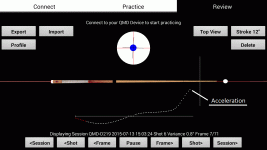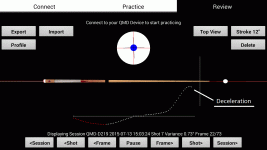As a professional golfer for many years (played Sr PGA Tour for 6 years back in the 90's), I am aware that the best putting strokes are not in "acceleration mode at impact.
Studies have shown that best putting strokes reach peak speed prior to impact and are "coasting" at desired impact speed at point of impact. Ball absorbs impact force and putter head slows as a result of impact. Follow through is less than backstroke.
I know there is a lot of emphasis on cue acceleration through impact. Is it really true (or just a good intent), or would the same theory as in the putting example above be a valid concept?
As background, I am 73 yrs old - just got back to playing pool in Feb and am playing once or twice a week for about 2 hours each. Will probably play more during winter when golf season ends. Played a lot as a teenager but that hardly at all for 50+ yrs.
Probably a "low intermediate" - can run an occasional 8 or 9 ball rack - at this time. Took a 3 hour lesson from Mark Powell back in mid June. Just coming off right hip replacement surgery 10 weeks ago.
Appreciate any comments.
Thanks,
Bruce
Studies have shown that best putting strokes reach peak speed prior to impact and are "coasting" at desired impact speed at point of impact. Ball absorbs impact force and putter head slows as a result of impact. Follow through is less than backstroke.
I know there is a lot of emphasis on cue acceleration through impact. Is it really true (or just a good intent), or would the same theory as in the putting example above be a valid concept?
As background, I am 73 yrs old - just got back to playing pool in Feb and am playing once or twice a week for about 2 hours each. Will probably play more during winter when golf season ends. Played a lot as a teenager but that hardly at all for 50+ yrs.
Probably a "low intermediate" - can run an occasional 8 or 9 ball rack - at this time. Took a 3 hour lesson from Mark Powell back in mid June. Just coming off right hip replacement surgery 10 weeks ago.
Appreciate any comments.
Thanks,
Bruce

